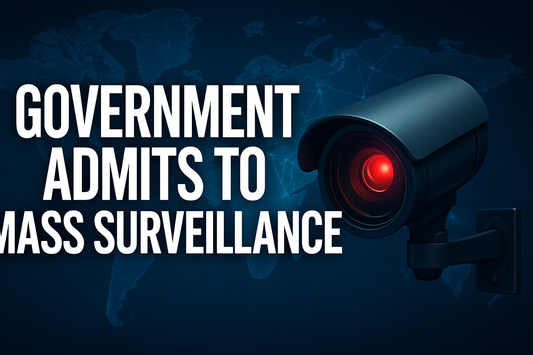In today’s digital age, where personal information is more vulnerable than ever, using a privacy phone has become an essential aspect of maintaining security and privacy. With many options out there, it's crucial to understand best practices for maximizing the security of your device. This article will focus on effective strategies for utilizing your privacy phone to ensure your data stays protected. Whether you’re using the Google Pixel 4 XL or a device operating on GrapheneOS, these tips will help you safeguard your information.
Understanding Your Privacy Phone
A privacy phone is designed to enhance your data security and protect your privacy. Devices like the Google Pixel 4 XL come with hardware capabilities and software that can be enhanced through privacy-focused operating systems such as GrapheneOS. By utilizing these technologies, you can achieve a level of security that conventional smartphones cannot provide.
The Role of Operating Systems
Operating systems are the backbone of any smartphone. While standard systems like Android provide basic functionality, specialized operating systems like GrapheneOS prioritize user privacy. Here are some ways it helps:
- Security patches: Fast updates to address vulnerabilities.
- Sandboxing: Restricts what apps can access your data.
- Privacy-focused permissions: Users have more control over app permissions.
Best Practices to Secure Your Privacy Phone
Now that we understand the importance of privacy phones and their operating systems, let's delve into best practices that users should follow for optimum security.
Keep Your Operating System Updated
Regular updates are critical for maintaining security. Ensure that your Google Pixel 4 XL is always running the latest version of your chosen operating system, such as GrapheneOS. Updates often contain essential security patches that protect against the latest threats.
Use Strong Passwords and Authentication
Utilize strong passwords that are difficult to guess or crack. Avoid generic phrases or easily obtainable information. Implement two-factor authentication (2FA) whenever possible, as it adds an additional layer of protection beyond just a password.
Be Mindful of App Permissions
Check the permissions your apps request and deny access that isn't necessary. With privacy phones, users can review and change these settings more easily. This practice limits an app's access to your personal information.
Enhancing Connectivity Security
Connectivity is a significant aspect of smartphone functionality. Therefore, knowing how to maintain control over your connections can further enhance your device's security.
Use VPN Services
A Virtual Private Network (VPN) encrypts your internet connection, allowing you to surf anonymously. This is particularly crucial when connecting to public Wi-Fi networks, as they are hotspots for cybercriminals. Opting for a reliable VPN service can protect your data transmission.
Disable Unnecessary Connections
When not in use, turn off Bluetooth, NFC, and Wi-Fi. These connections can be exploited by malefactors looking to intercept information. By disabling them, they cannot serve as gateways for unauthorized access.
Data Management Strategies
Effective data management is also a cornerstone of a secure privacy experience. Here are ways to handle your data wisely:
Encrypt Your Data
Encryption is a powerful tool for protecting sensitive information. Ensure that your personal data, including photos and documents, is encrypted. With systems like GrapheneOS, your device offers built-in encryption features that automatically protect your data.
Regularly Backup Important Information
Always backup your data to a secure location. This practice ensures that even in the event of data loss, such as damages or theft, your important information remains intact. Consider using encrypted cloud services that prioritize security.
Being Smart About Online Behavior
Security doesn’t end at device settings; your online behavior plays a crucial role too. Being aware of your digital footprint is imperative.
Avoid Phishing Scams
Be cautious about unsolicited emails or messages that ask for personal information. Always verify the source before clicking links or downloading attachments. Phishing attacks are designed to trick users into providing sensitive information.
Limit Sharing on Social Media
Restrict the amount of personal information you share on social media platforms. Cybercriminals can use this data to impersonate you or conduct targeted attacks. It’s better to err on the side of caution.
Being Informed About Future Threats
The digital landscape continually evolves, and so do the threats associated with it. Making sure you stay informed can significantly enhance your ability to respond to new risks.
Follow Tech News and Security Updates
Stay updated on the latest security news and vulnerabilities associated with your devices. Community forums and tech news outlets are great resources for learning about emerging threats and how to mitigate them.
Participate in Cybersecurity Awareness Training
Consider enrolling in cybersecurity training programs. These programs can provide insights into the latest threats, safe online practices, and ways to protect yourself while using your privacy phone.
Your Path to Lasting Security
Using a privacy phone offers unparalleled advantages in security and privacy, but it requires proactive measures from the user. By following these best practices, from maintaining your operating system to being mindful of your online behaviors, you can significantly boost your data's protection. Remember, the effort you put into securing your device today will keep your information safe from prying eyes in the future. Whether you're wielding a Google Pixel 4 XL or any other privacy-focused device like those running GrapheneOS, protect yourself and your data decisively!








